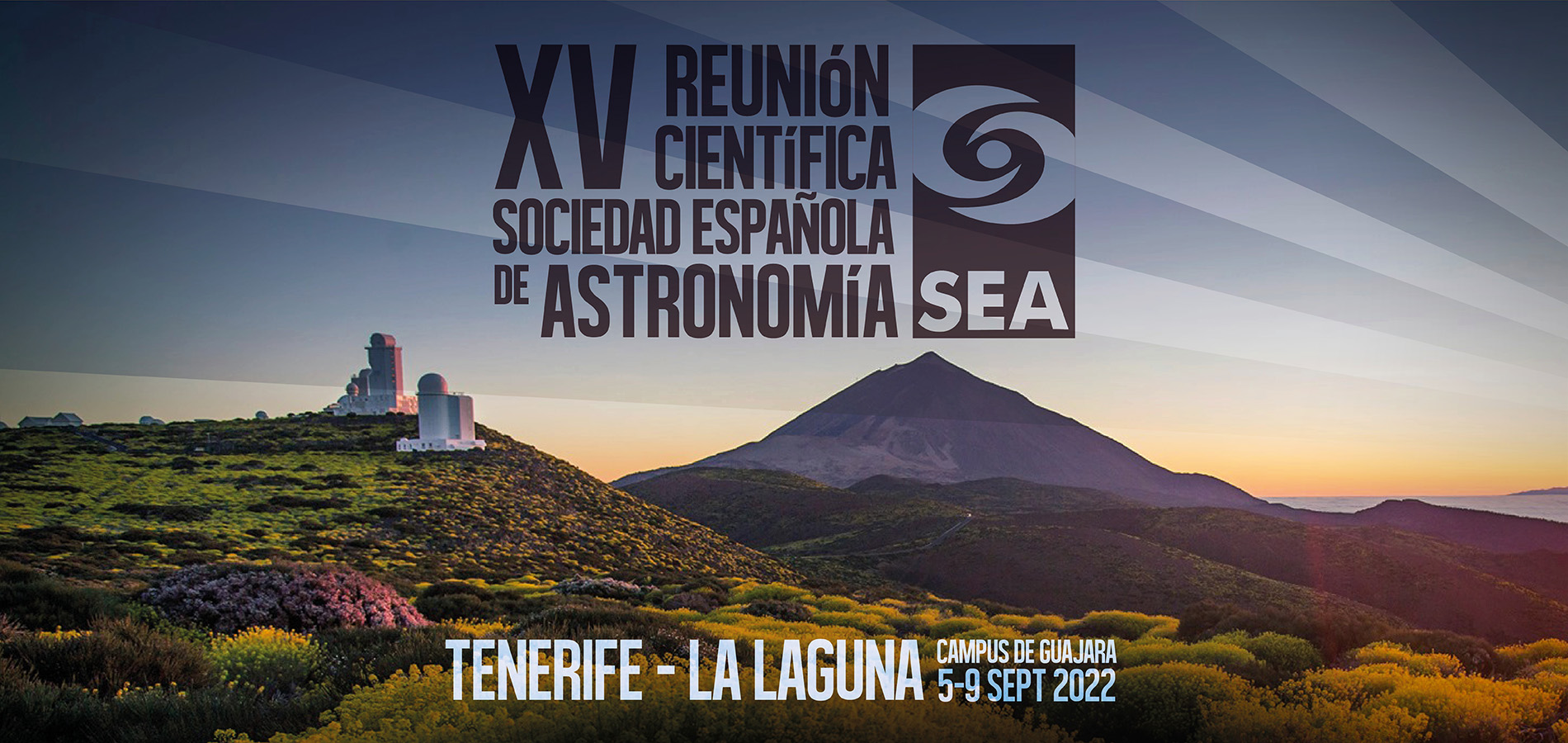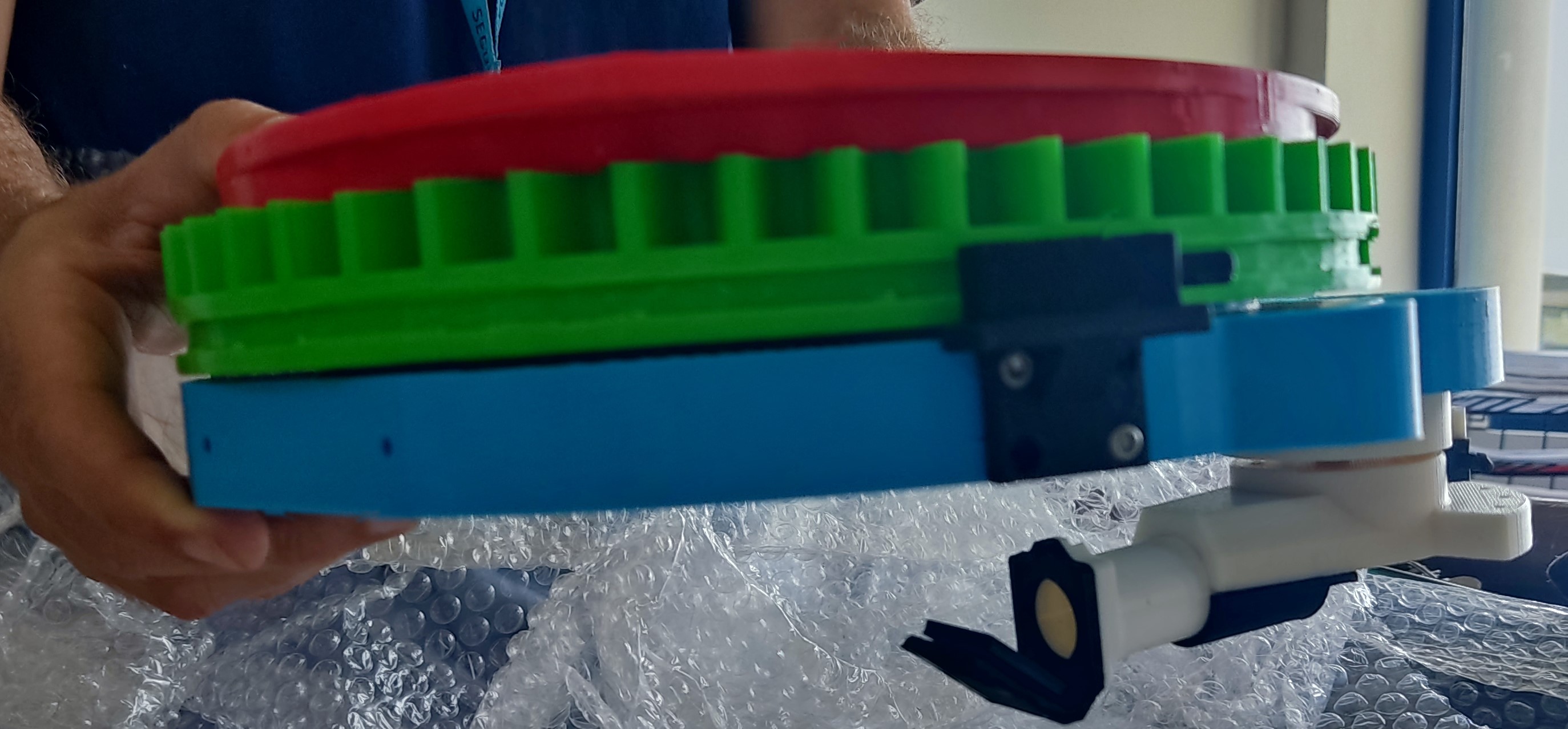The XV Scientific Meeting of the Spanish Astronomical Society (SEA) was held in La Laguna University (Tenerife) between September 5th and 9th, 2022.
The meeting was organized, as on previous occasions, in the form of plenary and parallel sessions. It included the traditional group meetings, the presence of companies, and events open to the general public.
This time, the Italian Astronomical Society and its astronomical community were invided as it is SEA’s intention to publicise existing scientific collaborations between groups from both countries and promote the start of new ones.
Congress topics: Planetary Sciences; Cosmology and Astroparticles; Education, Outreach, and Heritage; ESO and Spain: scientific results; Solar Physics; Galaxies; Instrumentation and Computation; The Milky Way and its Components.

Websites:
- https://www.sea-astronomia.es/reunion-cientifica-2022
- https://research.iac.es/congreso/SEA2022/pages/en/presentation.php
On this occasion, the CAB HARMONI team gave a talk and presented a poster.
- “CAB contribution to the instrument ELT-HARMONI: the last steps of its design phase” by Dr. Javier Piqueras López
Abstract: HARMONI is the optical and near-IR integral field spectrograph (IFS) selected as a first-light instrument for the Extremely Large Telescope (ELT). With four spatial scales (30, 20, 10 and 4 mas) and a wide range of spectral resolving powers (3500-18000), HARMONI will allow astronomers to address many of the ELT science cases. The Centro de Astrobiología (CAB INTA/CSIC) and the Instituto de Astrofísica de Canarias (IAC) form part of the international consortium developing HARMONI, participation that will constitute a unique opportunity to access to the ELT as soon as it becomes operative via the guaranteed time.
We describe here the current status of the CAB contribution to HARMONI, which currently is on the final stages of Phase C (Final Design). In particular, we will focus on the technical work-packages developed at CAB, i.e. the Calibration Module (CM) of the instrument and the Low-Order WaveFront Sensing sub-system (LOWFS), as well as on the status of the Calibration Plan of the whole instrument. We will briefly describe the detailed designs of these sub-systems, the prototype activities under development at CAB, and the planning of the MAIT that will start by the second half of 2023.
- Gonzalo J. Carracedo Carballal’s poster:
“HARMONI at ELT: An evolvable software architecture for the instrument pointing model“
Abstract: HARMONI is the first light visible and near-IR integral field spectrograph
for the ELT. In order to achieve its maximum resolution level, both
HARMONI and ELT must co-operate in closed loop mode, correcting its
pointing continuously. This is done by measuring the position of natural
guide stars (NGS) outside the science field (in the so-called technical
field) using a guiding probe in the form of a mobile mirror named Pick-Off
Arm (POA). Since the POA must be installed in a controlled-temperature
environment, ELT’s focal plane must be relayed from the Nasmyth
platform to the POA by means of focal plane relay optics.
This design introduces a series of optomechanical stages that will affect
the pointing measurements by systematic and random error
contributions. To correct the former and characterise the impact of the
latter (as well as the performance of any necessary corrective model),
simulations of the pointing error measurement process are required.
We introduce harmoni-pm: a Python-based simulator prototype which,
departing from a geometric optics modelisation of the instrument,
attempts to reproduce the main drivers of the instrumental pointing error.
harmoni-pm features a software architecture that is resilient to
instrument model refinements and enables performance analyses of
corrective models based on simulated calibrations. Results showed that
the relay optics are the main drivers of the instrumental pointing error
(order 200 µm).
The current simulator has been also critical in the design of a corrective
model that not only takes noisy measurements into account, but also
error distributions thereof. This motivated the development of a Bayesian
corrective model that is able to integrate the uncertainty of noisy
measurements into the posterior knowledge of the final corrective model
parameters.








